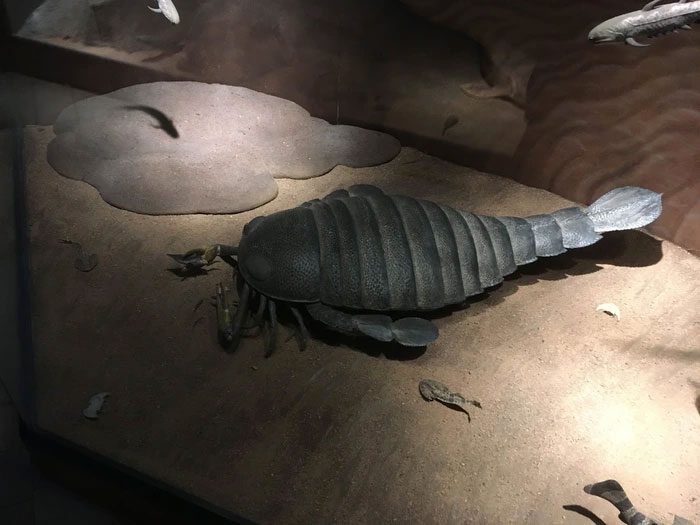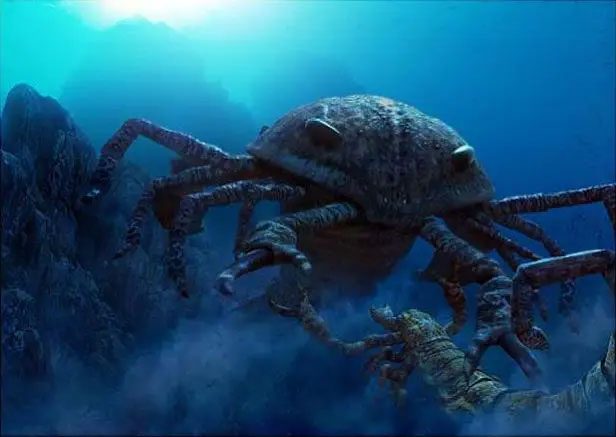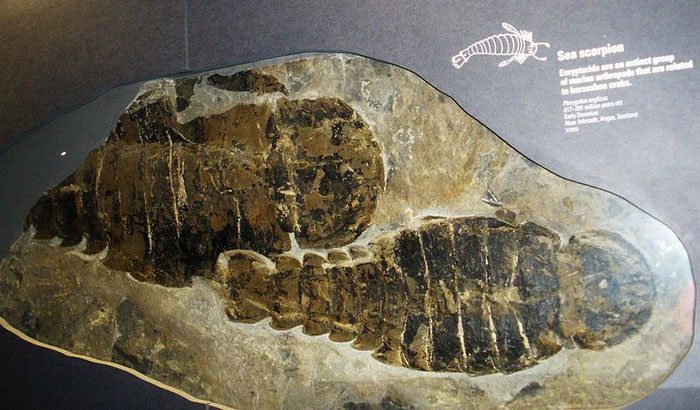The ancient past of Earth continues to amaze us with remarkable discoveries, and the recent finding of a 2-meter-long sea scorpion fossil in Australia is no exception.
Within Australia’s vast fossil record, paleontologists have made a notable discovery – a 2-meter-long species of sea scorpion that thrived millions of years ago. The discovery of this ancient predator sheds light on the diverse marine ecosystems that existed during prehistoric times. The significant preservation of its fossils presents a rare opportunity to explore the mysteries of this extraordinary creature.
This species of sea scorpion is officially named Pterygotus australis, which once roamed the ancient seas of Australia during the Silurian period. With its gigantic size and fearsome appearance, it was undoubtedly a top predator of its time. The finding of such a well-preserved specimen provides invaluable insights into the ecosystem and evolution of marine life during this era.

Sea scorpions include some of the largest aquatic predators to ever appear in the fossil record. They swam very agilely, using their large forelimbs and jaws to catch prey. Researchers believe that sea scorpions primarily fed on fish and smaller arthropods.
Pterygotus australis, the 2-meter-long sea scorpion, possesses a unique set of characteristics that distinguish it from modern relatives. Its body structure is characterized by a long, segmented exoskeleton, jointed appendages, and a pair of large, menacing claws. This combination of features made it a formidable predator capable of capturing and overpowering its prey.
The size of Pterygotus australis is particularly noteworthy. At 2 meters in length, it surpasses most known species of sea scorpions, making it one of the largest arthropods to ever exist. Its large size and robust body suggest it was an exceptional swimmer, capable of navigating ancient seas with ease.

The most prominent feature of the giant sea scorpion is its two sharp claws used for catching prey. They specialized in hunting fish and mollusks, using their forelimbs to grasp their catch before consuming it.
The discovery of Pterygotus australis provides valuable insights into the dynamics of the prehistoric marine ecosystem. As a top predator, it played a crucial role in maintaining ecological balance and influencing the evolution of other species. Its presence likely affected the behavior, morphology, and distribution of other marine organisms.
The fossil record of Pterygotus australis offers clues about its diet and hunting strategies. Its claw shape and structure suggest that it used them to grasp and immobilize prey, which could have included smaller fish, invertebrates, and possibly other sea scorpions. By studying the remnants of its stomach contents and related fossils, researchers can gain a better understanding of the complex web of life in ancient Australian waters.

In recent studies, archaeologists at Yale University have re-examined the eyes of several sea scorpion specimens and concluded that this ancient creature had poor eyesight. The structural layers of its eyes are similar to those of today’s horseshoe crabs.
The discovery of the 2-meter-long sea scorpion in Australia holds significant importance for our understanding of evolutionary history and paleoenvironments. By studying fossils and reconstructing ancient ecosystems, scientists can gain deeper insights into how life adapted and evolved in prehistoric oceans.
The presence of such large sea scorpions challenges our previous assumptions about the size limits of marine arthropods during that era. It suggests that ancient seas were home to many different giant species, and our understanding of prehistoric ecosystems is still far from complete.
Moreover, the discovery highlights the importance of preserving and studying fossil sites worldwide. Each new finding has the potential to reshape our understanding of the past and provide glimpses into the ancient world that would otherwise remain shrouded in mystery.
The finding of the 2-meter-long sea scorpion in Australia is a testament to the wonders of Earth’s ancient past. It also provides invaluable insights into prehistoric marine ecosystems, the evolution of arthropods, and the interactions among species within ancient food webs. As paleontologists continue to uncover the secrets of our planet’s history, each new discovery brings us closer to understanding the rich tapestry of life that has existed on Earth for millions of years.


















































